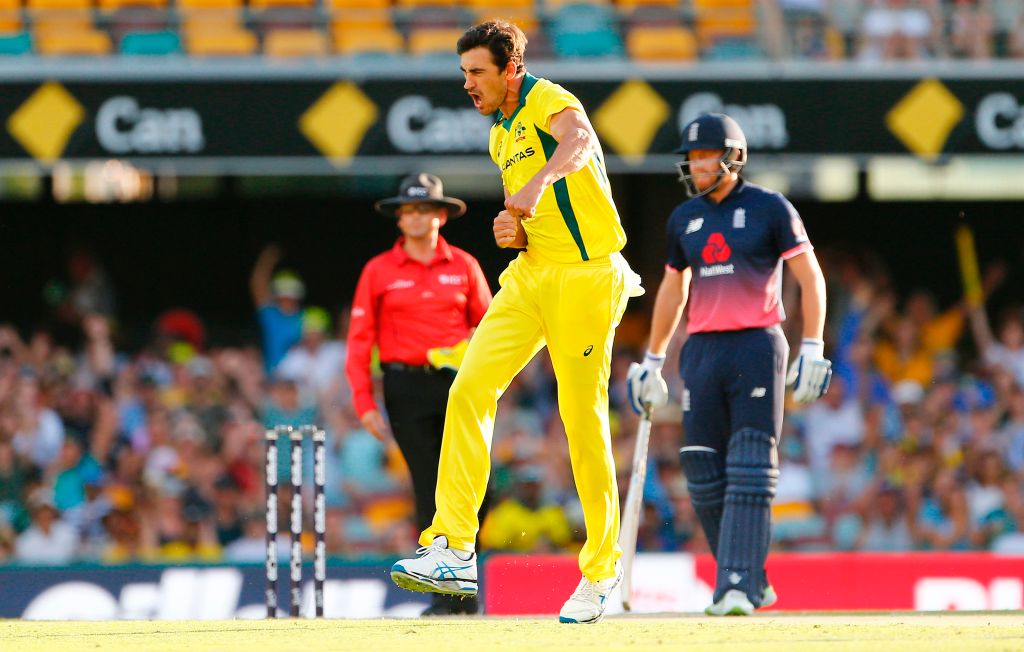

Disturbing images from the Melbourne Cricket Ground showing a tiny crowd in attendance at the third Australia and England ODI should never have come as a surprise to anyone.
The three-match series - which has been out of sight, out of mind to the general sporting public - might have seen the home side restore some pride with a 3-0 bashing of the T20 World Cup winners, but it has hardly been well supported.
Sparse crowds in Adelaide and Sydney (on a Saturday no less) to kick off the series were backed up by a crowd which left some asking whether it was a Sheffield Shield clash or a fully-fledged international.
And it's not as if Australia rolled out the B team - something they could easily have opted to do with just two weeks between the T20 World Cup finishing and the first Test against the West Indies next week in Perth.
The early knockout from the short form tournament helped that decision along, but with Australia playing 14 Tests in the next seven months (home to the West Indies and South Africa, away to India and England), as well as a potential World Test Championship final, the temptation to rest players for the national selection panel led by George Bailey would have been enormous.
In saying that, there is an ODI World Cup at the end of the run of Test matches, and very few lead up games to prepare for the tournament under new captain Pat Cummins, so the idea of resting all the stars for the entire series was a bad one at best.
With Australia at full strength though, it does beg plenty of questions about the cricket calendar.
Some will claim it is now made for TV, but that simply isn't the case. Crowds or not, games like these simply must be played with what is still cricket's most prestigious event to be held in 12 months, and this time in the difficult conditions of India.
Of course, that may not make a great deal of sense to the sporting public who tune out of series like these, but to the players, it's of paramount importance.
The thing was, of course, that Blind Freddie could see these crowds coming.
Particularly yesterday's in Melbourne. A small crowd already was only shrunk further by the fact it was a dead rubber, and on a wet, cold and miserable day. Rain delays marred the first innings as David Warner and Travis Head went to town on England's bowling attack.
They ultimately posted the largest ODI partnership at the MCG by any team for any wicket as Australia romped their way past 350.
Again, just ask Warner and Head how meaningless these games are for the real answer, no matter what the public believe to be the case.
But Cricket Australia made poor decisions in the scheduling of these games. They have to be played, but not at the venues they were.
It's the simple fix to crowd sizes for series like these. Meaningless to a crowd in Melbourne, Sydney and Adelaide? Yes.

A week after the T20 World Cup, where Australia drew sizeable crowds certainly in Melbourne and Sydney - or would have in Melbourne if not for the weather with more than 50,000 tickets sold - and where India virtually sold out the MCG twice, these games are always going to pale in comparison.
But ask the residents of places like Hobart, Launceston, Canberra, Townsville, Cairns and Coffs Harbour if they reckon games like these are meaningless.
All six of those venues - and they are just the immediate examples that spring to mind - would be capable of hosting international cricket.
Granted, Townsville and Cairns have already had the Australian side against New Zealand and Zimbabwe this summer and at this time of year have major risks of thunderstorms - something that would rule the Northern Territory out - but Hobart only had a handful of games at the front-end of the T20 World Cup and miss out on Test cricket this summer, while Launceston has never hosted the Australian national team.
Canberra had a T20 against England but hasn't hosted any other cricket yet this summer, while Coffs Harbour is Australia's best regional ground and has hosted the Big Bash League.
Crowd sizes would be small because capacity is small, but taking the Aussie team to the people and creating a far better atmosphere by having a closer-to-capacity crowd, rather than a ten per cent full Melbourne Cricket Ground, is the way to go in these types of series in future.
The lack of attendance doesn't mean the death of cricket, although it does raise questions about the ODI format.
It simply implies that the timing of these games, to be played in major centres of Australia, was way, way off.






